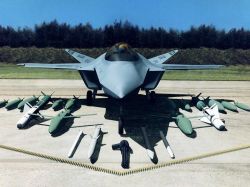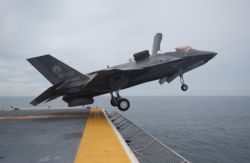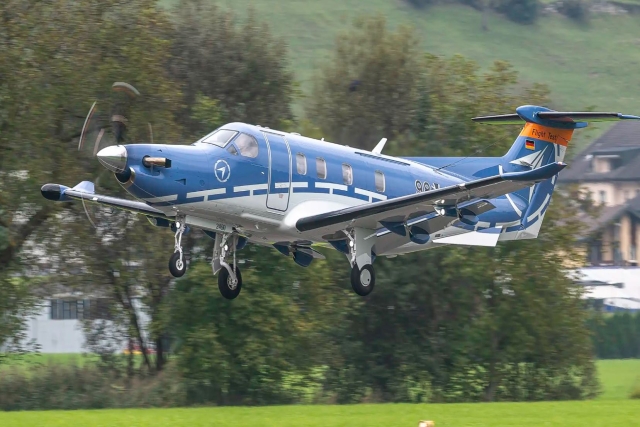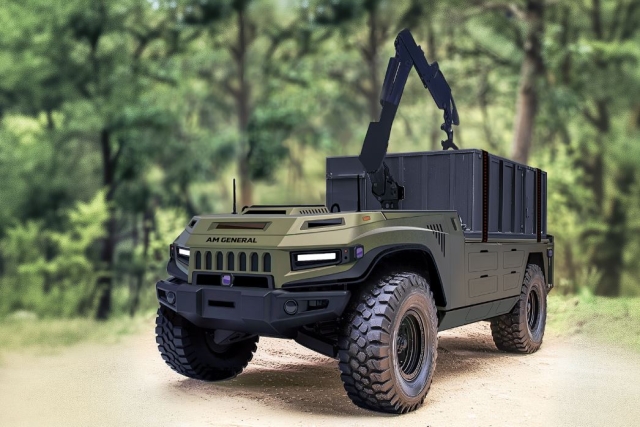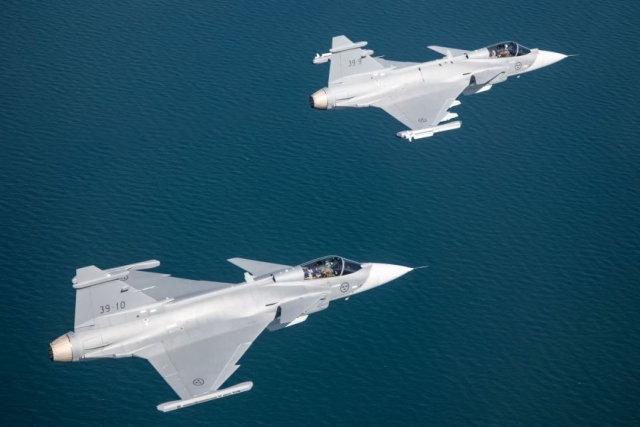Delays In F-35 Fighter Program Affect US Hornet Fleet
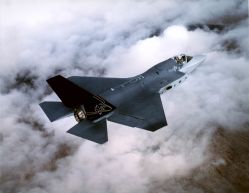
The US military’s F/A-18 Hornet legacy fighters are flying more hours and will require more maintenance than expected due to delays in the F-35 Joint Strike Fighter Program, Rear Adm. Michael Manazir was quoted as saying by defense journal, DoDBuzz last week.
“The corrosion impacts, I would say, caught us by surprise,” Michael was quoted as saying during a Navy and Marine Corps aviation conference on Capitol Hill by the journal. “When we opened them up and realized the extent of the corrosion damage, we realized we couldn’t just replace the parts we were going to replace. We had to put those airplanes aside.”
The navy and marine corps are flying nearly 10,000 flight hours up from 6,000 flight hours because of the delays in the fighter program. As a result, the twin-engine F-/A-18 aircraft is experiencing a high degree of wear and tear including corrosion.
The services had been replacing worn out parts and other components on the F/A-18 as part of a maintenance program to ensure the aircraft could reach a service life of 6,000 flight hours, Manazir said. Extending that engineering effort to yield 10,000 flight hours “would normally be a straightforward task — if it weren’t for the corrosion created by the environments we operate in,” he said.
Complicating the effort was an assumption made by the Navy decades ago that the Hornet, as a composite aircraft, wouldn’t require the same level of corrosion-prevention work as older, mostly metal planes, such as the F-14 Tomcat, A-6 Intruder and the A-7 Corsair II, Manazir said.
“We had not planned on operating the Hornet past 6,000 hours,” he said. “So we did not do the normal corrosion control processes that we used to use on metal airplanes, like the Tomcats, A-6s, A-7s. We understood what corrosion was on metal. The science is different on corrosion on composites.”
In addition, the damage to the aircraft isn’t uniform and appears to be affecting different parts and structures, Manazir said. “They made each airplane coming into the depot kind of a one-off,” he said. “We realized we couldn’t just replace the parts — we also had to look at the corrosion on the surrounding framework.”
Manazir didn’t say how many Hornets are down for repairs at depots. But they’re among an ongoing aircraft shortfall that’s estimated to be more than 100 planes through 2020, he said. The problem is exacerbated by mandatory spending caps that limit available maintenance funding, he said.
“That equates to two to three squadrons,” he said.
What’s more, the maintenance woes aren’t limited to F/A-18s. The Marine Corps wasn’t able to deploy CH-53E Super Stallion heavy-lift helicopters to assist with earthquake relief efforts in Nepal this spring because of a wiring issue that required replacing hydraulic lines, according to Lt. Gen. Jon Davis, deputy commandant of aviation.
The Corps instead dispatched to the country UH-1Y Huey helicopters and V-22 Osprey tilt-rotor aircraft. The deadly May 12 helicopter crash that killed six Marines and two Nepalese soldiers is believed to have been caused by bad weather in the Himalayas.
